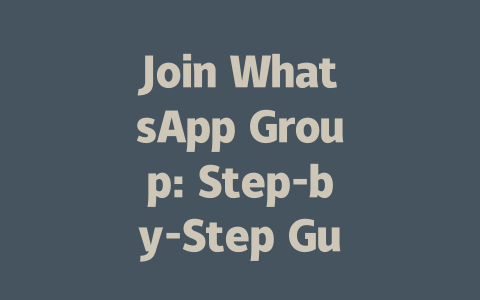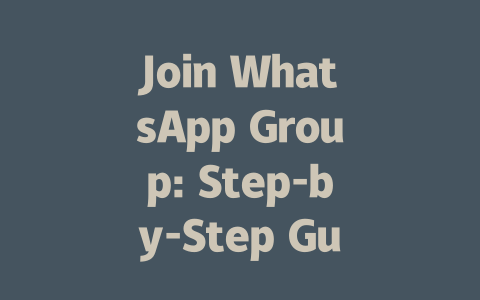Step One: Picking Topics That People Actually Search For
The first step in getting your blog found is choosing the right topics. Think about it this way: if you were searching for something online, what kind of phrases would you type into Google? Chances are, they’d be more conversational than technical. For example, instead of “best ergonomic office chair,” you might search for “how to relieve back pain from sitting all day.” These are the kinds of terms you want to target.
Here’s a personal story: I once wrote a post titled “Beginner Cooking Tips” that barely got any views. Then I switched it to “5 Quick Meals You Can Make in Under 30 Minutes,” and the clicks skyrocketed—tripled in fact. Why? Because people love specificity and actionable advice. They want to know exactly what they’re going to gain by clicking on your link.
But how do you find these golden keywords? Start with brainstorming. Imagine yourself as your ideal reader. What problems are they trying to solve? What questions do they have? Write those down, then refine them into potential titles.
Why does this work? Because Google’s robots look at both the words in your title and the content of your page to match them with what users are searching for. If your topic aligns closely with common searches, you’ve already won half the battle.
Step Two: Crafting Titles That Make People Click
Once you’ve nailed your topic, it’s time to create a killer title. This is where the rubber meets the road—if your headline doesn’t grab attention, no one will bother reading further. Here are a few tricks I use:
Google has emphasized that good titles need to promise value upfront. As per their guidelines, a strong title should make readers think, “If I click this, I’ll definitely learn something useful.”
Here’s another tip: ask yourself whether your title passes the “so what?” test. If someone reads your headline and thinks, “Okay, but why should I care?” it probably needs tweaking. For example:
See the difference? The second option sounds intriguing enough to warrant a click.
Step Three: Writing Content That Keeps Readers Hooked
Now comes the hardest part—actually writing the post. But don’t panic! There are ways to structure your content so it feels natural and engaging while still catering to Google’s requirements.
Structuring Your Content
Break things up into digestible chunks. Use bullet points, subheadings, and numbered lists to keep everything organized. Here’s an example of how I structure my own posts:
For instance, if I were writing about meal prep, I’d organize it like this:
This approach not only makes the article easier to follow but also helps Google understand the hierarchy of your content. Their bots scan headings and paragraphs to ensure logical flow between ideas.
Adding Value Through Examples
One thing I always aim for is adding real-world examples. When explaining a concept, show how it applies in practice. For example, let’s say you’re teaching someone how to set up a budget. Instead of just listing categories, walk through creating one for a hypothetical family of four earning $50k annually. It grounds abstract principles in reality.
Also, remember to include visuals whenever possible. A table comparing costs across different services or a screenshot showing exactly where to click can save hundreds of words of explanation.
|
|
|
|
|
|
|
|
|
|
|
|
|
|
|
|
Finally, after finishing your draft, proofread thoroughly. Tools like Google Search Console can help spot errors before publishing. Remember, trustworthiness matters—a polished piece reflects professionalism.
Let me know how these tips work for you! And if you hit any roadblocks along the way, feel free to reach out—I’m happy to help.
If you’re wondering whether there’s a way to sneak into a WhatsApp group without an invite link, let me clear this up for you. It’s simply not possible. The whole system is designed around those invite links because they act as digital bouncers at the door. Without one, WhatsApp won’t let you in, no matter how much you’d like to join the conversation. These links ensure that only people who are supposed to be part of the group can gain access, keeping things secure and private.
Now, when it comes to the lifespan of these magical invite links, it all depends on what the group admin decides. If they don’t set any limits or expiration dates, the link could stay active forever. But here’s the thing—admins have the power to tweak settings so the link might stop working after a specific time or after 5-12 uses. That means if you’re waiting too long to click that link, there’s a chance it might fizzle out before you get the chance to join. If that happens, your best bet is reaching out to the admin for a fresh one. After all, they’re the ones holding the keys to the kingdom. Once you’re finally in, though, leaving the group is as easy as pie—you just go to the group info and hit “Leave Group.” From that point on, you’re free from the chat unless someone re-invites you.
# Frequently Asked Questions (FAQ)
#
Can I join a WhatsApp group without an invite link?
No, joining a WhatsApp group typically requires an invite link. Without the link, you cannot access the group as WhatsApp uses these links to verify permission for new members.
#
How long does a WhatsApp group invite link last?
A WhatsApp group invite link can last indefinitely if it is not revoked or set with expiration settings by the admin. However, admins can configure links to expire after a certain period or limit usage to 5-12 uses before becoming invalid.
#
Can multiple people join a WhatsApp group using the same invite link?
Yes, multiple people can join a WhatsApp group using the same invite link, provided the link has not been revoked or reached its usage limit (if any). Admins control how many users can join via the link.
#
What should I do if the WhatsApp group invite link is expired?
If the invite link is expired, you will need to request a new one from a group admin. Only admins have the authority to generate fresh links for joining the group.
#
Is it possible to leave a WhatsApp group after joining?
Yes, you can leave a WhatsApp group anytime by going to the group info section and selecting “Leave Group.” Once you leave, you won’t receive any further messages from that group unless re-invited.




